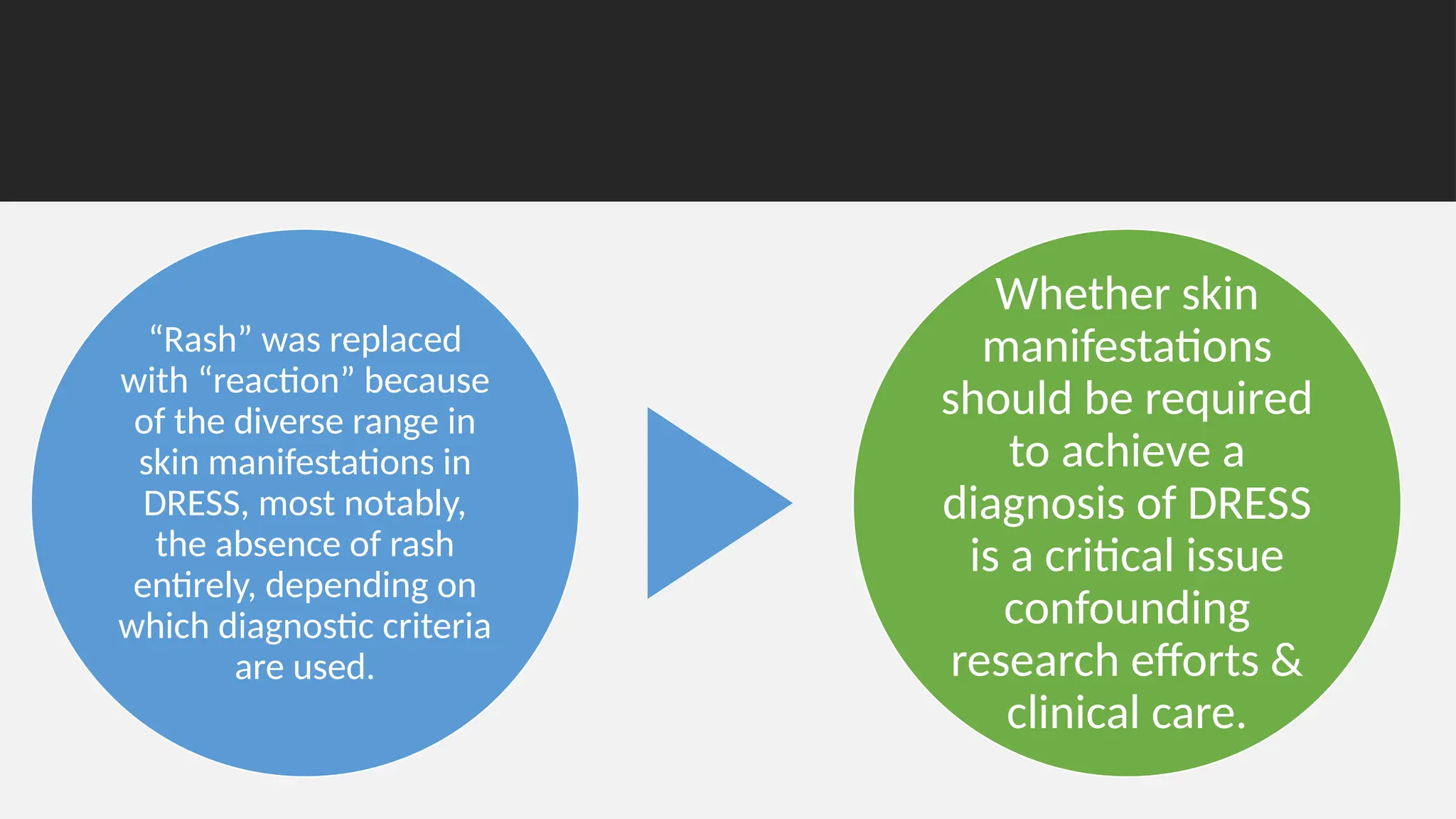Case presentation, DRESS syndrome in a rheumatoid arthritis patient secondary to sulfasalazine & literature review with discussion of differential diagnosis, diagnostic criteria & management options
Ahmed Yehia, MD
Internal Medicine
Immunology (Allergy & Rheumatology)
Beni-Suef













































































































![In vitro tests — In vitro tests are
only performed in specialized centers
and largely remain a research tool.
• Lymphocyte transformation test (LTT) . It measures
the proliferation of T cells after stimulation with a
drug in vitro and is best performed during the
recovery stage of th edisease.
• Drug-induced cytokine assays (interferon [IFN]-
gamma, tumor necrosis factor [TNF]-
alpha,upregulation of cell activation markers such as
CD69).
• Analysis of cytotoxic potential of effector cells (eg,
granzyme B, granulysin, CD107).](https://image.slidesharecdn.com/ahmedyehiacasekasrelaininovember2023-251003211718-2f829a51/75/Case-presentation-DRESS-syndrome-in-a-rheumatoid-arthritis-patient-secondary-to-sulfasalazine-literature-review-with-discussion-of-differential-diagnosis-diagnostic-criteria-management-options-Ahmed-Yehia-110-2048.jpg)




















